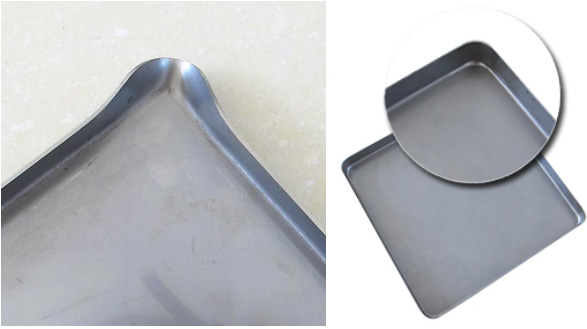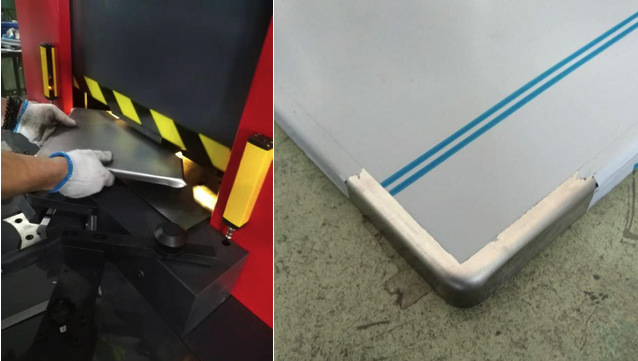SWAN Corner Forming Machine is cold forming metal sheet panel Corner to Radius,No need Welding, grinding.


Traditionally, when processing door panel parts with low carbon steel sheets, aluminum sheets, stainless steel sheets, etc., it is necessary to cut off the four corners first, and then need to be folded, welded, or even polished, which is very laborious, time consuming, and noise and dust. It will also seriously pollute the working environment and cause harm to the processing personnel. If a drawing die is used, the size of the door panel needs to be fixed, and different sizes of the door panel require different sizes of the mold. In response to this situation, swan corner forming machine has developed a molding machine that specializes in the corners of the door panels. With the swan corner forming machine angle forming machine, the plate does not need to open the corner, only the four sides of the plate are pre-bent, and the corners form a bell mouth shape, which can then be processed on the corner forming machine. Moreover, the size of the door panel can be arbitrarily changed.
With a set of molds, door panels of different thicknesses and sizes can be machined. And the four corners of the door panel and the surface of the door panel are an organic whole, which does not require welding, grinding, etc. The corners are very beautiful, and the uniformity is high, which can make the subsequent plating and spraying adhesion strong and durable, and also greatly improve the production. Efficiency and improved working environment.
With different machining dies, door panels with different corners can be machined. The angle of the corner of the door panel can be arbitrarily selected from 45° to 150° (the angle is fixed once selected). The radius of the arc of the corner of the door panel can be arbitrarily selected from 2 to 50 mm (4, 6, and 8 mm are standard radii. Once selected, the radius is fixed).
By adjusting the gap between the upper forming roll and the lower forming block, the same set of molds can process sheets of different thicknesses.
At the same time, the machine tool is equipped with a shearing die to cut the corners of the corners after forming.
The machine can also be easily machined for door panel parts with inverted or flared edges. However, it should be noted that the valgus parts are made of special forming rolls and standard forming blocks; the varnish parts are made of standard forming rolls and special forming blocks.
The forming block has a total of 4 forming angles and can be machined for different plate thicknesses. The standard fillet radius is 4, 6, 8mm (the same molding block fillet radius must be the same). It is also possible to use a profiled block with a special fillet radius (zui large R50 mm).
The optional Oil Spray unit and the Grinding surface rotary reduce the friction and make the molding process light and smooth, which is beneficial to the forming of the corners of the high-folded workpiece and improves the forming angle. Surface finish.
Preparation of pre-bent parts: Before processing the corners of the door panel on the corner forming machine, it is necessary to pre-bend the four sides of the sheet on the bending machine. The middle part of the four sides of the plate is bent, and the four corners of the plate leave a bell mouth shape.
When bending, the two ends of the lower die need to be specially modified. In order to ensure the consistency of the lower die, the customer needs to take two segments of 100mm long on the lower die of the used bending machine for the repair of the lower die, and send it to ACF for repair. . At the same time, the upper and lower molds are divided into sections, which can be easily combined into different lengths, so that they can be applied to the processing of door panels of different sizes. If the upper and lower molds do not have a combination of specific lengths, the upper and lower molds can be pulled apart by a certain gap, as long as the total length of the upper and lower molds meets the requirements.
Forming height: The forming height of the workpiece is affected by factors such as material, plate thickness, arc size, and lubrication. In general, the forming height can reach 10-15 times the thickness of the board. For thicker materials that are easy to stretch, the forming height can reach 15-20 times the thickness of the board.
